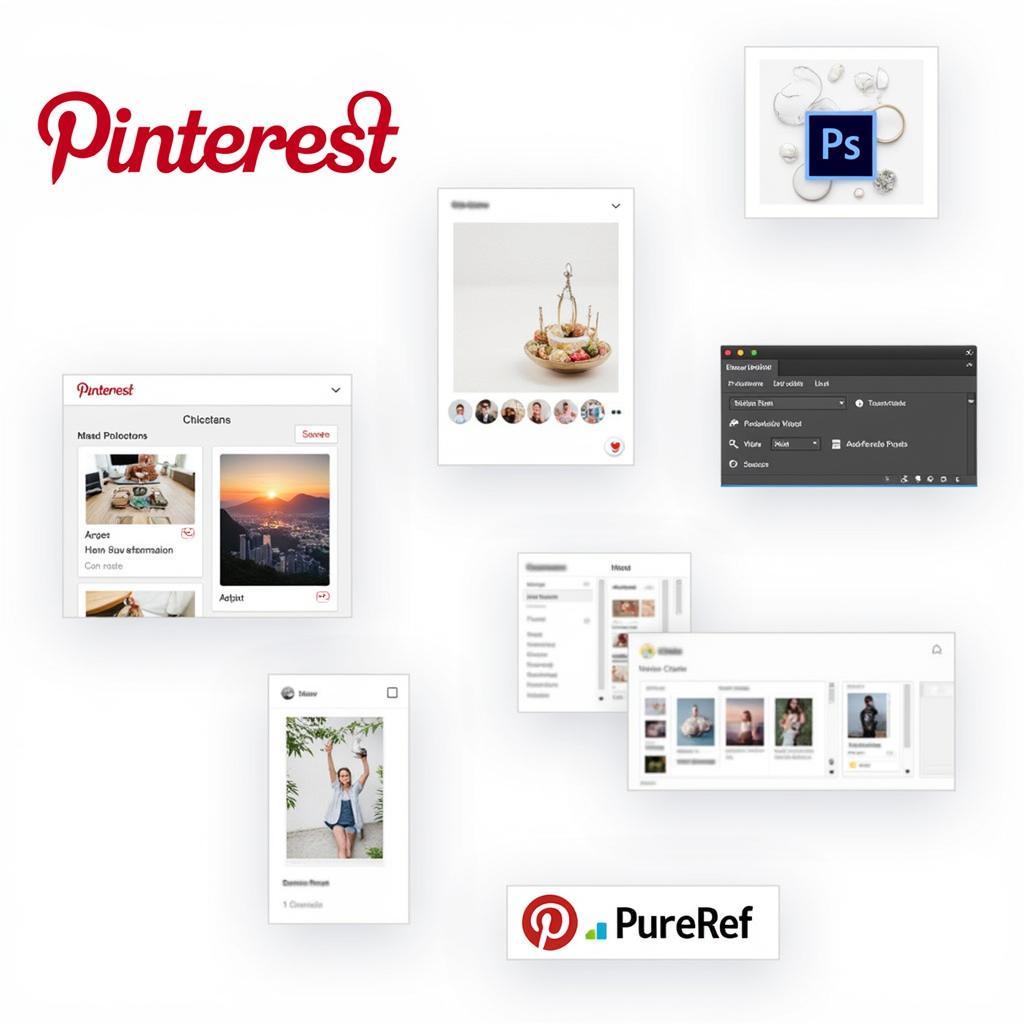Creating a captivating and immersive game requires careful attention to detail, and that includes establishing a strong visual identity. This is where mood boards come in handy. A mood board, in the context of game development, is a collection of images, colors, textures, and even sounds that encapsulate the desired look and feel of a game. It’s a powerful tool that helps game developers, artists, and designers to solidify their vision and communicate it effectively with the rest of the team.
Why Are Mood Boards Essential for Game Development?
Imagine embarking on a journey without a map or setting sail without a compass. That’s akin to diving into game development without a mood board. It serves as a visual compass, guiding the team towards a cohesive aesthetic and ensuring everyone is on the same page.
Here’s why mood boards are indispensable:
- Define the Game’s Atmosphere: Whether you’re aiming for a whimsical fairytale world or a gritty cyberpunk dystopia, a mood board captures the essence of your game’s atmosphere through carefully curated visuals.
- Establish Visual Consistency: By compiling a collection of reference materials, a mood board helps maintain a unified visual language across different aspects of the game, from character design to environment art.
- Communicate Effectively: Mood boards act as a visual shorthand for communicating the game’s aesthetic to the entire development team, stakeholders, and even potential publishers.
- Spark Creativity and Inspiration: The process of creating a mood board itself can be a wellspring of inspiration, leading to new ideas and innovative design choices.
 Example of a Game Mood Board
Example of a Game Mood Board
Crafting Your Game’s Mood Board: A Step-by-Step Guide
Creating a mood board doesn’t require artistic genius, but rather a keen eye for detail and a clear understanding of your game’s vision. Here’s a step-by-step guide to get you started:
- Identify Your Core Theme and Style: What is the overarching theme of your game? Is it a lighthearted adventure, a suspenseful thriller, or a strategic simulation? Determining the core theme will guide your selection of visuals.
- Gather Inspiration: Explore a variety of sources for inspiration, such as other games, movies, art books, photography, fashion, and even real-world locations.
- Curate Your Visuals: Don’t be afraid to be selective. Choose images that resonate with your game’s theme, evoke the desired emotions, and showcase elements like color palettes, lighting styles, and overall composition.
- Experiment with Layout and Organization: There’s no one-size-fits-all approach to mood board layout. Experiment with different arrangements, groupings, and visual hierarchies to find what best conveys the essence of your game.
 Digital Tools for Creating Mood Boards
Digital Tools for Creating Mood Boards
Tips for Effective Mood Board Creation
- Think Beyond Static Images: Consider incorporating other elements like textures, patterns, typography, and even sound snippets to create a more immersive and multi-sensory experience.
- Iterate and Refine: Don’t be afraid to revisit and revise your mood board as your game’s development progresses. New ideas may emerge, and the initial vision may evolve over time.
- Collaborate and Get Feedback: Share your mood board with your team and solicit feedback. Encourage open discussions and incorporate valuable insights to further enhance the visual direction.
“A well-crafted mood board acts as a visual contract between the development team and the game’s intended audience,” says renowned game designer, Anya Sharma. “It sets the stage for a cohesive and memorable player experience.”
Conclusion
Creating a mood board is a crucial step in the game development process. It’s a visual roadmap that guides your team towards a cohesive and compelling aesthetic, ensuring that your game not only looks stunning but also effectively conveys its intended mood and atmosphere. By investing time in this initial stage, you lay the foundation for a visually captivating and immersive gaming experience.
FAQs
1. What are some common mistakes to avoid when creating a mood board?
One common mistake is overcrowding the mood board with too many visuals, which can dilute the overall message. It’s essential to be selective and choose images that clearly communicate the desired aesthetic. Another pitfall is neglecting to consider the game’s target audience and their visual preferences.
2. Can I use copyrighted images in my mood board?
While it’s acceptable to use copyrighted images for internal brainstorming and inspiration within your development team, it’s crucial to avoid using them in any public-facing materials or presentations. Opt for royalty-free images, purchase licenses, or create your own original visuals to avoid copyright infringement.
3. How detailed should my mood board be?
The level of detail depends on your preference and the stage of development. In the early stages, a more general mood board focusing on overall themes and emotions might suffice. As the game progresses, you can create more specific mood boards for individual characters, environments, or game mechanics.
4. Are physical mood boards still relevant in the digital age?
While digital mood boards offer convenience and flexibility, physical mood boards can still be incredibly valuable. The tactile experience of pinning up printed images, fabrics, and other materials can spark creativity in a unique way.
5. Can I have multiple mood boards for a single game?
Absolutely! It’s not uncommon to have multiple mood boards to explore different aspects of the game, such as character design, environment art, UI/UX, and even marketing materials.
Need help building the ultimate game? Contact us!
Phone Number: 0902476650
Email: [email protected]
Address: 139 Đ. Võ Văn Kiệt, Hoà Long, Bà Rịa, Bà Rịa – Vũng Tàu, Việt Nam.
Our 24/7 customer support team is here to assist you!





